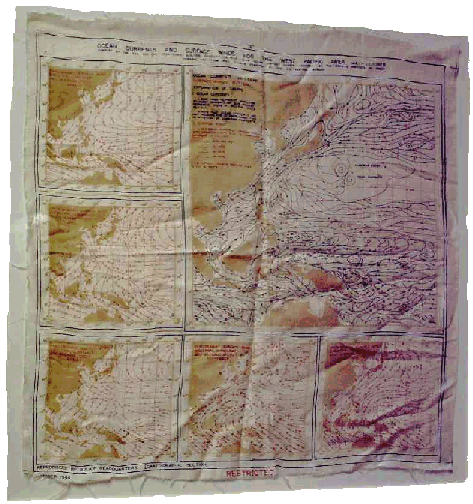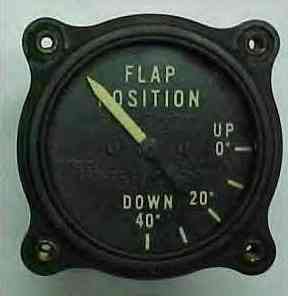|
|

|
|
This silk map was carried by Leslie O. Evans during missions in the Southwest Pacific. If his B-24 went down in the ocean, this map would give an idea of where the ocean currents would carry him. The map was made of silk instead of paper so it would not disintegrate in the water. This WWII map (dated October 1944) is on display at the new "Museum of Military History" in Jacksonville, Arkansas.
|
|
What happened to all the B-24's?
Of the 19,000 B-24's produced for WWII, only a dozen or so exist today.
In the early 1940's our government realized there would be a large amount of surplus planes when World War 2 came to an end. With this in mind, the Army Air Force carefully disassembled a war-weary B-24. They kept track of the man-hours, and laid all the pieces out to determine scrap value of the metals and components. As it turned out, the scrap value amounted to $2,400, but the man-hours labor amounted to $3,200. To make things worse, if they were to store the planes, it would cost about $20 per month to store each plane. With this dollars & cents information at hand, it was decided to dispose of the warbirds as quickly as possible after the war's end.
In June of 1946 the scrap auctions began. 5,483 warplanes (including 2,567 B-24's) at Kingman, Arizona were auctioned off to a salvage company for $2,780,000, which amounted to about $500 per plane. There were five other air fields with large quantities of planes auctioned off, like Walnut Ridge, Arkansas, with 4,821 (mostly heavy bombers) selling for $1,818,000, which amounted to about $375 per plane.
When considering that a B-24 had cost more than $200,000 to build, these scrap prices were very miniscule.
These scrappers didn't carefully disassemble the planes, but instead chopped them up and smelted-down the metal. Although these planes are gone, there are numerous WW II aircraft pieces and artifacts remaining today.
|

|
|
Actual W.W.II gauge from a B-24 cockpit. Phosphorescent "glow in the dark" instrument markings show "Flap Position Down 40°, 20° and UP 0°." There is a good chance this gauge saw combat as it was removed from a B-24 being scrapped at Kingman Army Airfield at the end of the WW II.
There are several markings on the front that are barely visible, because they are in black and tiny, they are: "GENERAL ELECTRIC, MADE IN USA, TYPE DJ-11, MODEL 8DJ11PAZ, VOLTS 24, SUB 11, serial NO. 2135767, N.P. 94842", and six different patent numbers with the most recent one being "U.S. PAT. 2248616" which was granted in 1941. Identification markings on back are "24 VOLTS," "GK32E8928," and other assorted inspection or maybe date stamp codes "ZT," "O," "A1 H60" in a circle, and "Q." There is a four-pin jack on the back that reads "MONOWATT."
|
|